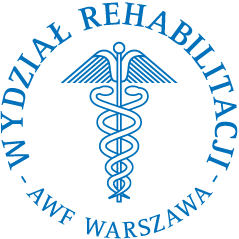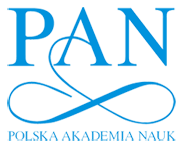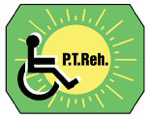


|
Current issue
Archive
Manuscripts accepted
About the journal
Editorial board
Reviewers
Abstracting and indexing
Contact
Instructions for authors
Publication charge
Ethical standards and procedures
Editorial System
Submit your Manuscript
|
4/2021
vol. 35 Evaluation of tongue strength and symptoms of oral dysphagia in patients accompanying temporomandibular disorder
Hazel Celik Guzel
1
,
Aysenur Tuncer
2
Advances in Rehabilitation, 2021, 35(4), 9–16
Online publish date: 2021/07/23
Article file
- 2021-04-ar-02.pdf
[0.37 MB]
ENW EndNote
BIB JabRef, Mendeley
RIS Papers, Reference Manager, RefWorks, Zotero
AMA
APA
Chicago
Harvard
MLA
Vancouver
1. Komiyama O, Kawara M, Arai M, Asano T, Kobayashi K. Posture correction as part of behavioural therapy in treatment of myofascial pain with limited opening. J Oral Rehabil. 1999; 26(5): 428-35. 2.
Suvinen TI, Reade PC, Kemppainen P, Könönen M, Dworkin SF. Review of aetiological concepts of tem-poromandibular pain disorders: towards a biopsychosocial model for integration of physical disorder factors with psychological and psychosocial illness impact factors. Eur J Pain. 2005; 9(6): 613-33. 3.
Anastassaki Köhler A, Hugoson A, Magnusson T. Prevalence of symptoms indicative of temporomandibular disorders in adults: cross-sectional epidemiological investigations covering two decades. Acta Odontol Scand. 2012; 70(3): 213-23. 4.
Logemann, JA. Evaluation And Treatment of Swallowing Disorders. 2nd ed. Austin,Texas:Pro-ed; 1998. 5.
Robbins J. Old swallowing and dysphagia: thoughts on intervention and prevention. Nutr Clin Pract. 1999; 14(5 suppl): S21-S26. 6.
Ferreira CL, Machado BC, Borges CG, Rodrigues Da Silva MA, Sforza C, De Felício CM. Impaired orofacial motor functions on chronic temporomandibular disorders. J Electromyogr Kinesiol. 2014; 24(4): 565- 71. 7.
Gilheaney Ó, Béchet S, Kerr P, Kenny C, Smith S, Kouider R, et al. The prevalence of oral stage dysphagia in adults presenting with temporomandibular disorders: a systematic review and meta-analysis. Acta Odontol Scand. 2018; 76(6): 448-458. 8.
Shaker R. Oropharyngeal Dysphagia. Gastroenterol Hepatol (NY). 2006; 2(9): 633-4. 9.
Logemann JA. Swallowing disorders. Best Pract Res Clin Gastroenterol. 2007; 21(4): 563-73. 10.
DeMatteo C, Matovich D, Hjartarson A. Comparison of clinical and videofluoroscopic evaluation of children with feeding and swallowing difficulties. Dev Med Child Neurol. 2005; 47(3): 149-57. 11.
Plowman EK, Tabor LC, Robison R, Gaziano J, Dion C, Watts SA, et al. Discriminant ability of the Eating Assessment Tool-10 to detect aspiration in individuals with amyotrophic lateral sclerosis. Neurogastroenterol Motil. 2016; 28(1): 85-90. 12.
Arrese LC, Schieve HJ, Graham JM, Stephens JA, Carrau RL, Plowman EK. Relationship between oral intake, patient perceived swallowing impairment, and objective videofluoroscopic measures of swallowing in patients with head and neck cancer. Head Neck. 2019; 41(4): 1016-23. 13.
Cheney DM, Siddiqui MT, Litts JK, Kuhn MA, Belafsky PC. The Ability of the 10-Item Eating Assessment Tool (EAT-10) to Predict Aspiration Risk in Persons with Dysphagia. Ann Otol Rhinol Laryngol. 2015; 124(5): 351-4. 14.
Rosa RR, Bueno MDRS, Migliorucci RR, Brasolotto AG, Genaro KF, Berretin-Felix G. Tongue function and swallowing in individuals with temporomandibular disorders. J Appl Oral Sci. 2020; 28: e20190355. 15.
de Felício CM, Medeiros AP, de Oliveira Melchior M. Validity of the ‘protocol of oro-facial myofunctional evaluation with scores’ for young and adult subjects. J Oral Rehabil. 2012; 39(10): 744-53. 16.
Marim GC, Machado BCZ, Trawitzki LVV, de Felício CM. Tongue strength, masticatory and swallowing dysfunction in patients with chronic temporomandibular disorder. Physiol Behav. 2019; 210: 112616. 17.
Fassicollo CE, Machado BCZ, Garcia DM, de Felício CM. Swallowing changes related to chronic temporomandibular disorders. Clin Oral Investig. 2019; 23(8): 3287-96. 18.
Dworkin SF, LeResche L. Research diagnostic criteria for temporomandibular disorders: review, criteria, examinations and specifications, critique. J Craniomandib Disord. 1992; 6(4): 301-55. 19.
Bijur PE, Silver W, Gallagher EJ. Reliability of the visual analog scale for measurement of acute pain. Acad Emerg Med. 2001; 8(12): 1153-7. 20.
Okeson, JP. Management of temporomandibular disorders and occlusion. 3rd ed. Saint Louis; Mosby Year Book; 1998. 21.
Shaghayegh Fard B, Ahmadi A, Maroufi N, Sarrafzadeh J. Evaluation of forward head posture in sitting and standing positions. Eur Spine J. 2016; 25(11): 3577-82. 22.
Ohrbach R, Larsson P, List T. The jaw functional limitation scale: development, reliability, and validity of 8-item and 20-item versions. J Orofac Pain. 2008; 22(3): 219-30. 23.
Belafsky PC, Mouadeb DA, Rees CJ, Pryor JC, Postma GN, Allen J, et al. Validity and reliability of the Eating Assessment Tool (EAT-10). Ann Otol Rhinol Laryngol. 2008; 117(12): 919-24. 24.
Roe JW, Leslie P, Drinnan MJ. Oropharyngeal dysphagia: the experience of patients with non-head and neck cancers receiving specialist palliative care. Palliat Med. 2007; 21(7): 567-74. 25.
Solomon NP, Munson B. The effect of jaw position on measures of tongue strength and endurance. J Speech Lang Hear Res. 2004; 47(3): 584-94. 26.
Bag AK, Gaddikeri S, Singhal A, Hardin S, Tran BD, Medina JA, et al. Imaging of the temporomandibular joint: An update. World J Radiol. 2014; 6(8): 567-82. 27.
Huckabee ML, McIntosh T, Fuller L, Curry M, Thomas P, Walshe M, et al. The Test of Masticating and Swallowing Solids (TOMASS): reliability, validity and international normative data. Int J Lang Commun Disord. 2018; 53(1): 144-56. 28.
Youmans SR, Youmans GL, Stierwalt JA. Differences in tongue strength across age and gender: is there a diminished strength reserve? Dysphagia. 2009; 24(1): 57-65. 29.
Stierwalt JA, Youmans SR. Tongue measures in individuals with normal and impaired swallowing. Am J Speech Lang Pathol. 2007; 16(2): 148-56. 30.
Youmans SR, Stierwalt JA. Measures of tongue function related to normal swallowing. Dysphagia. 2006; 21(2): 102-11. 31.
McKenna VS, Zhang B, Haines MB, Kelchner LN. A Systematic Review of Isometric Lingual Strength- Training Programs in Adults with and without Dysphagia. Am J Speech Lang Pathol. 2017; 26(2): 524- 39. 32.
Takada K, Yashiro K, Sorihashi Y, Morimoto T, Sakuda M. Tongue, jaw, and lip muscle activity and jaw movement during experimental chewing efforts in man. J Dent Res. 1996; 75(8): 1598-606. 33.
Valdés C, Astaburuaga F, Falace D, Ramirez V, Manns A. Effect of tongue position on masseter and temporalis electromyographic activity during swallowing and maximal voluntary clenching: a cross-sectional study. J Oral Rehabil. 2014; 41(12): 881-9. 34.
Ferreira CLP, Sforza C, Rusconi FME, Castelo PM, Bommarito S. Masticatory behaviour and chewing difficulties in young adults with temporomandibular disorders. J Oral Rehabil. 2019; 46(6): 533-40.
This is an Open Access journal, all articles are distributed under the terms of the Creative Commons Attribution-NonCommercial-ShareAlike 4.0 International (CC BY-NC-SA 4.0). License (http://creativecommons.org/licenses/by-nc-sa/4.0/), allowing third parties to copy and redistribute the material in any medium or format and to remix, transform, and build upon the material, provided the original work is properly cited and states its license.
|
    |